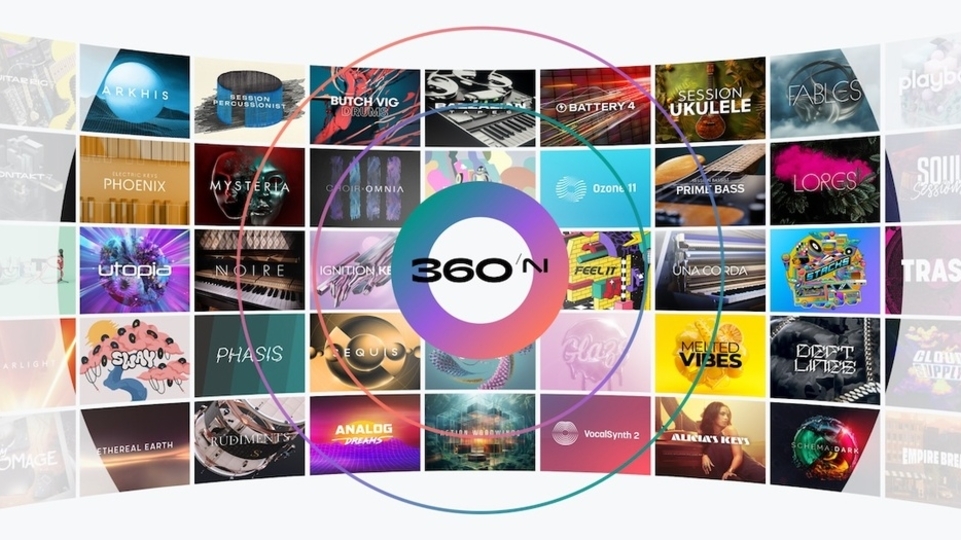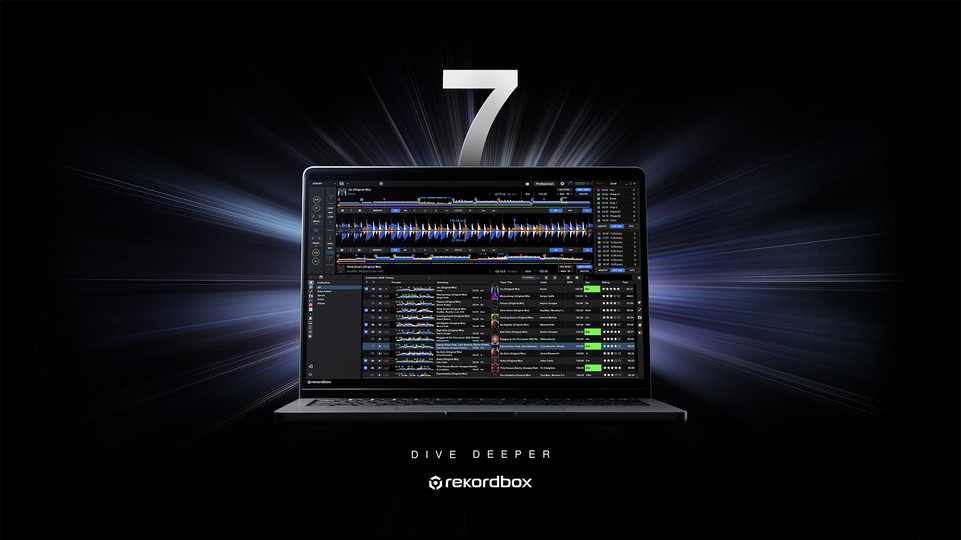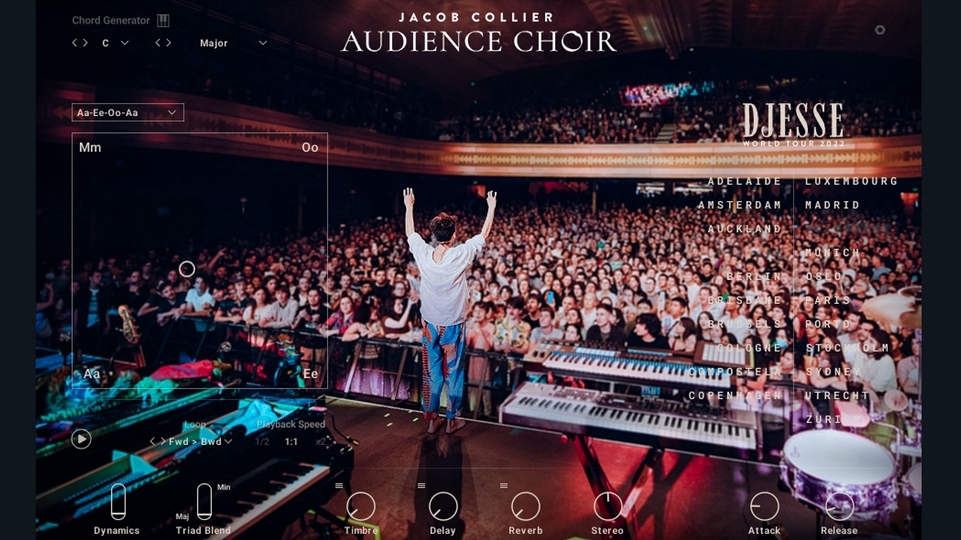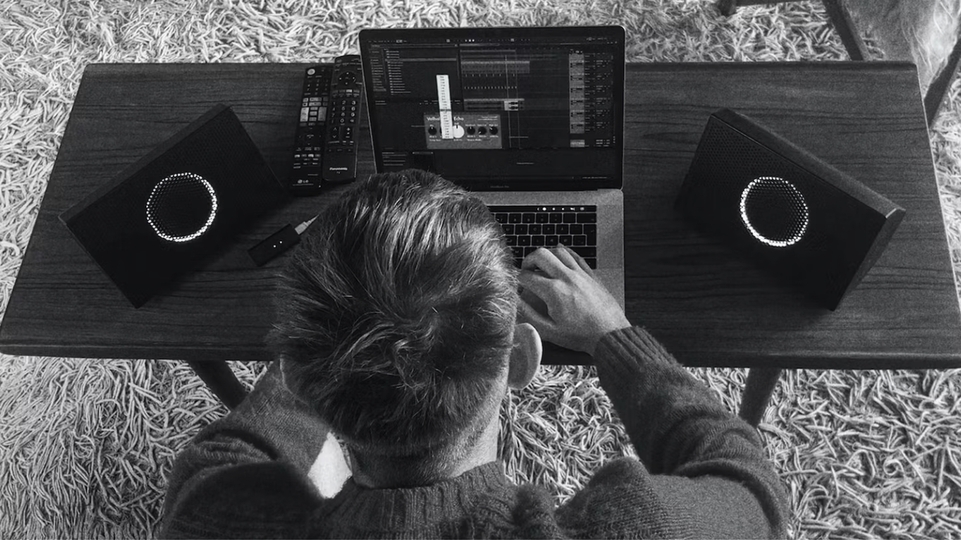
NI Maschine+ review: the ultimate standalone music-making device?
Native Instruments’ Maschine+ is an ambitious project; remodelling the popular hardware and software groovebox combo to operate as a standalone production unit. DJ Mag's Digital Tech Editor Declan McGlynn spent a few months with the unit before casting his verdict
When Native Instruments first released Maschine, it was attempting to fill a gap. Computers had become powerful enough to supersede hardware-packed studios that came before, meaning that while in-the-box music-making was possible, powerful and largely prefered, the tactile feedback and focused workflow of hardware was missing from the modern studio. No piece of hardware encapsulated that elusive ‘workflow’ better than the Akai MPC, a legendary sampler and ‘groovebox’ used by everyone from J Dilla and MF Doom to Mark Ronson and Kanye West. Despite its sound, legacy and aforementioned workflow, it was phased out in favour of bigger screens, more CPU and flexibility offered by the modern DAWs. But the fact remained when it came to hands-on beat making, be it the immediacy, workflow or sound, many still longed for a modern MPC-style solution. Maschine mk1 was born — a bespoke piece of hardware tied to a bespoke piece of software, promising to make the best of both the physical and digital worlds.
Fast forward 12 years and things have come full circle with Maschine+ — Native Instruments’ first completely standalone version of Maschine, no computer required. But as the functionality, features and libraries grew, can NI really cram over a decade of innovation and updates into a single box, minus the laptop screen, without compromising on usability? Let’s find out.
Build and feel
Maschine+ has the same form factor as Maschine mk3, all the way down to the layout of each button. In fact, it’s identical — apart from a re-labelling of Arranger to Ideas / Song mode — which will be good news for current users. It’s a credit to Native that they spent so much time making the mk3 usable without a computer that when you remove the computer entirely, nothing needs to change. It feels solid, slightly heavier than the mk3 at 2.5kg, with every button and knob feeling sturdy. The pads are excellent, sensitive but tough, and the main control knob feels satisfying to use. The unit feels like it could be tossed around in a backpack without any issues.
Round back, it’s still not hugely dissimilar to the mk3, with stereo line inputs for recording and sampling, stereo line output, a quarter-inch mic input, MIDI DIN I/O and USB A ports. The fact there’s only one stereo output and input is a bit disappointing, but you can hook up any supported soundcard to the USB A ports, potentially adding up to 16 ins and outs. More on that later. There’s also no phono ins for turntable sampling like on the Akai MPC Live, which would have been a nice nod to the MPC heritage. There’s also no CV/Gate outputs, so it’s very much a standalone sampler rather than a standalone sequencer for external kit. That being said, NI did add some presets for controlling hardware like the Tanzbaer drum machine and the Korg Volca Beats, with pre-mapped CCs for popular controls, but it’s more for one unit at a time, rather than a hub for multiple bits of kit.
We would have prefered the headphone port at the front as your cable trails off to the side and sometimes across the unit. There’s also a power port — this unit cannot be battery powered.


"You can dive deep into sound design, performance automation, loop variation and arrangement tweaks without much or any menu-diving"
Authorising and downloading
Once you turn on Maschine+ for the first time, you’ll need to connect to a WiFi network and authorise the unit using a QR code, which avoids entering lengthy email addresses. Once that’s done you can download any Maschine Expansions that are linked to your account and any other supported plugs like FM8, Reaktor, Kontakt, Monark, Massive and Prism. Maschine+ comes with five expansions of your choosing. It is possible to side-load any Reaktor ensemble or any custom Kontakt instrument, but they’re not all officially supported by NI. We’ll come back to that later too.
Browsing
There are many ways to load a sound in Maschine+, depending on what you need — full kits, individual one-shots, instrument plugins and instrument samples can all be loaded using the Browser +Plugin button. Once you load a sound, there are four modes to play it — Pad mode, Keyboard mode, Chord mode and Step mode.
Pad is the traditional 16 sounds, 16 pads setup with each sound given its own pad, Keyboard turns the 16 pads into chromatic steps with various scale modes, Chord mode lets you play sounds as chords, with scales, chord types and harmonisers, and Step activates the step sequencer. The Note Repeat also doubles up as an arpeggiator. There’s a ‘star’ favourites function in the browser too, as well as a User mode that looks outside the built-in library for custom samples, groups and plugins. The core (and excellent) Maschine library is pre-installed on the included micro SD card, but you can also load your own samples in two ways — either plug Maschine+ into your computer via USB and enter Storage Mode in the settings, or remove the SD entirely and plug it into your computer. Once Storage Mode is active, you can’t do anything until you’re finished transferring and exit Storage Mode which is a shame. It’d be nice to be able to transfer files while working.
Maschine+ can load any WAV or AIFF, but any longer names can be hard to read on the screen when browsing so it’s better to make them into Groups first in the software and save them with the samples into the Groups folder. Then you can load them as kits, which is much easier.
A lot has been said about the quality of the Maschine library, and it’s worth repeating — it really is excellent and there’s a good chance you won’t need anything else for your music. For trap, drill, hip-hop etc, there’s also the built-in drum synth and bass synth for more pure sinewave-based kicks and rumbling sub basslines. But one of the most appealing features of Plus for NI users who already have numerous Kontakt libraries and Reaktor ensembles is the ability to load them onto Maschine+. It needs to be stated that this isn’t officially supported by NI, and you need to own the full version of Reaktor and/or Kontakt to do it. It’s also a bit clunky to do (you save the Ens or NKI into the Sounds folder on the SD card) and there’s no guarantee it’ll even work — we couldn’t find a pattern between those that did and those that didn’t.
However some do, and aside from some CPU spikes, it’s a revelation for Reaktor owners to be able to take their custom ensembles (and those from the vast Reaktor User Library) on the road or on stage without a computer. You wouldn’t buy a Plus to reverse engineer some patches onto it — but the fact that the architecture is there for current NI products to run standalone is exciting. As we mentioned, the Reaktor-based Minimoog clone Monark already comes as standard with Plus so we’re hoping NI works out the issues and officially supports the whole Reaktor and Kontakt range sooner rather than later. Speaking of CPU, in testing, we didn't encounter any issues aside from some early spikes that were fixed in a firmware update. We could happily run eight groups, all with their own FX chains, while CPU bobbed around 50-60%. We expect NI isn't officially supporting the majority of its own plugs for now until it figures out how to get them to run smoothly on the Plus.
Creating variation
The touch strip can be used in various ways to input notes, pitch bend, control performance FX, and for modulation. When no button is active, its lights will indicate the bar position of the current pattern. Performance FX are dedicated FX separate to the built-in FX — more on those later — specifically designed to work with the touch strip. As you slide across the strip, certain parameters like dry/wet, delay rate, etc, will be adjusted depending on the effect. It’s a very quick way to add variation to a programmed loop and is very flexible for such a small control. The Auto button essentially records any knob movements as part of the sequence, so you can very quickly vary hi-hat decay, open and close a filter etc — anything you can control you can automate with ease. It’s the best way to break out of the 4-/8-/16-bar loop feel. Another way to quickly control parameters is to use the Macros function. This lets you grab a parameter from a deep menu and assign it to a Macro for instant access. You can also assign multiple parameters to one Macro for tweaking sounds with one twist.
Combining the touch strip, Auto button and macros, you really can dive deep into sound design, performance automation, loop variation and arrangement tweaks without much or any menu-diving, one of the biggest concerns when moving away from laptop screens.


"The FX sound great, especially the spatial sounds like reverb and delay"
FX and mixer
All of the built-in FX from the software are also in Maschine+. Effects can be loaded at a Sound, Group or Master level. FX can also be added to a live audio input channel, chained and re-arranged. They’re automatically added as Inserts, but you can also add them as Send FX on an Auxiliary channel.
The FX sound great, especially the spatial sounds like reverb and delay. Automating their parameters as part of the loop can add so much character to a sound, and the immediacy with which it all happens means you rarely lose flow. The compressor can also take a sidechain key from any sound from any group, which is handy for quick mix balancing or experimental FX.
Flow is the key when it comes to Maschine+. Workflow, immediacy, intuitive functionality — all things that can either facilitate or destroy your creative process — are honed and toned on the Plus. It’s remarkable how quickly your ideas go from concept to creation. That’s also a credit to getting away from the laptop screen and having dedicated buttons for dedicated functions — with no web browser to distract or 500 plugins to cycle through. But, beyond that, you can very quickly get a competent loop going, with automation, macros, FX and sample quality all playing a part.
Maschine's Mixer
Maschine+’s mixer will be familiar to any previous users, with volume and panning at both Sound and Group level. That’s about it really — there are two aux channels and you can send any Group or Sound to another empty Sound, if you want to emulate an FX buss for example. We created a whole Group with no sounds loaded, with each pad assigned to short reverb, medium reverb, long reverb, short delay etc, and can send any sound from any ground to that ‘pad’. You can quickly lose track of what’s going where so renaming pads and groups is key — you can also Save the group separate from the project to re-use your FX Group in another session.
It’d be nice to see some more visual mixing for plugins like EQ and compressors, with waveform display and visible bands. There are some improved GUIs already in the Maschine plugin, like Drum Synth, so it would be good to see them ported over. In fact, more could be done with the coloured screens when using plugins — right now it’s wasted with a small static GUI and the effect name, which seems like a missed opportunity.
USB devices
NI’s solution for fewer ins and outs, both MIDI and audio, is the ability to add other Core Audio and Core MIDI devices via USB A ports round back. This is also where you’ll add your MIDI keyboard. NI only officially support their Komplete Audio soundcard range, but any Core Audio card — which is most — will work too. You can route up to 16 audio inputs and outputs via external interfaces, and any extra MIDI DIN ports will also be added to the I/O.
Obviously the more I/O the better — for £1,099 RRP it’s a shame there’s no more ins and outs directly on the unit, but adding your own might also be welcome to some who’ve already got their studio routed into a specific soundcard. Speaking of integrating your Maschine+ into your studio, if you want to finish an idea on a bigger screen or add some more third-party plugins, you can’t just plug in via USB and crack on. You need to change the hardware into Controller Mode before it’ll appear in the software, and doing so closes the current project. Projects stored on the Plus won’t show up in the software either, they have to be manually opened or exported from the SD card, or in Storage Mode, which can lead to missing samples, incompatible plugins etc. More communication and compatibility between the Plus and the Maschine software needs to happen.


"The speed with which you can get a quality idea together is remarkable, with Maschine’s library a big part of the story"
Ideas, Patterns and Scenes
As you probably expected given the screen real estate a big arrangement can occupy, it’s in laying out your track where Maschine+ falls down. This isn’t just a criticism of the Plus though, the Maschine software has long toyed with different concepts when it came to arranging, settling on an Ideas and Song approach on the Plus. Maschine uses Scenes, which are a collection of Patterns, viewed in a vertical window, not unlike Ableton Live. Ideas mode is where you essentially create your Scene using different patterns of your choice. Scenes are then arranged into full tracks in Song mode.
It can get confusing as to what layer you’re currently on, and will most likely take some manual time to get used to it. This is also where not being able to quickly jump back to the DAW is a blocker.
Conclusion
After spending more than six months with Maschine+, we were extremely impressed with the creative implications of the unit. As we’ve said before, but it bears repeating, it is a huge credit to NI how they’ve managed to remove the laptop entirely and retain 95% of the Maschine for existing users. Sometimes, however, they’ve kept it too similar to the original, choosing to retain a static GUI image for plugins instead of a proper interactive GUI that would make more use of the two colour screens, rather than reducing parameters to text and numbers only.
We also badly need better DAW integration, and being able to plug in and instantly continue your idea on a computer is probably the biggest update required.
The core takeaway though is overwhelmingly positive. The speed with which you can get a quality idea together is remarkable, with Maschine’s library a big part of the story. But it’s not the only part — the immediacy and workflow of Maschine, not just Plus, has long been hailed as one of its strongest points, and without the distraction of the modern DAW, chords, sequences, loops, beats and ideas flow from the unit.
And that’s really what you’re paying for. You can focus on the limitations of I/O and the less than intuitive arranging mode. And there are other units like Akai’s MPC range that will integrate with your studio better. But really Maschine is about speed and ideas. It’s a creed almost every artist subscribes to: getting your ideas down fast, in the most fluid way possible is key. The fewer obstructions, the better the creative output. Maschine+ subscribes to this creed too, and although you’re unlikely to finish a whole track on the Plus, mix and all, the library’s quality and the immediacy of tweaking, pitch shifting and adding FX means you effortlessly follow your ear more than any bit of kit we’ve used in a long time.
Despite issues with DAW integration and the lack of instant vinyl sampling via phono ins, Maschine really does feel like one of the most mature, fully-formed, standalone music-making devices on the market. We’re excited to see what firmware updates will bring to this new member of the Maschine family.







